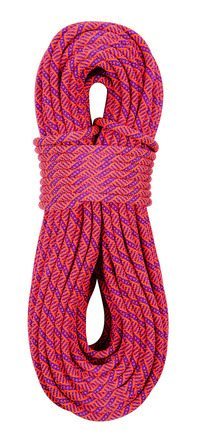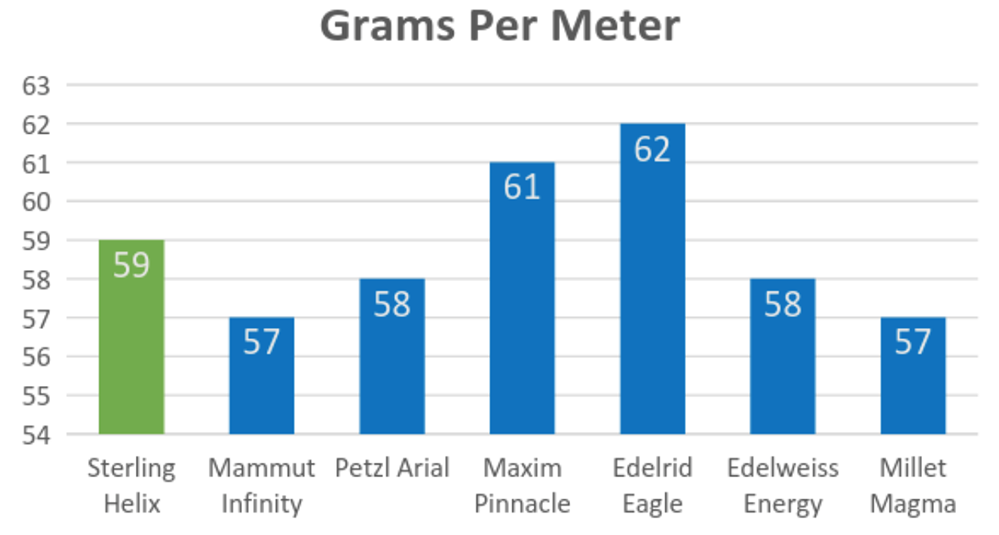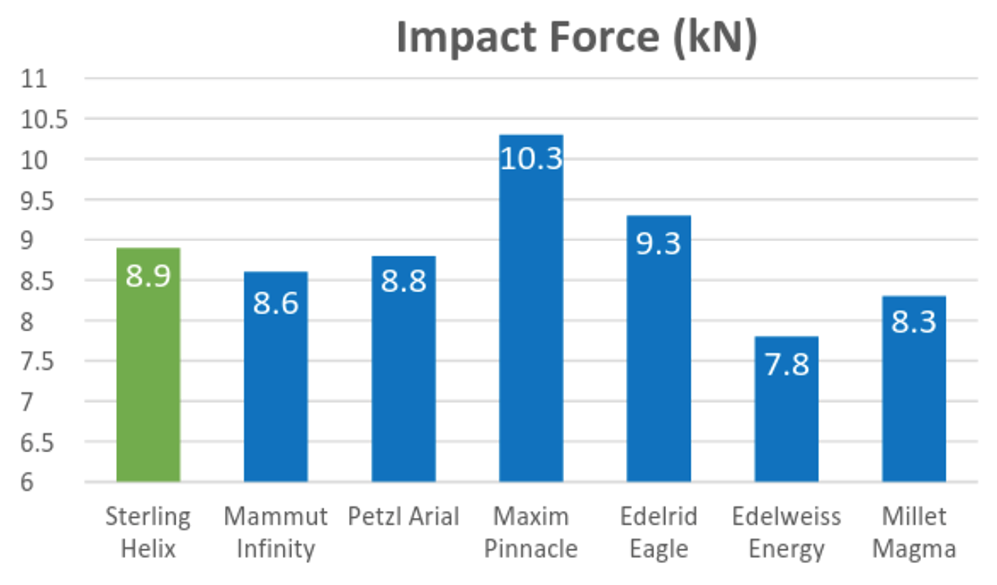
Sterling Evolution Helix Rope
Specs:
Diameter: 9.5mm
UIAA falls: 7
Weight: 59 g/M
Dynamic Elongation: 31.90%
Static Elongation: 7.20%
Impact Force: 8.9 kN
MSRP: $212.95
Days Tested: 25
Test Locations: Clear Creek Canyon, Shelf Road, Boulder Canyon, Eldorado Canyon, Lumpy Ridge, & Rocky Mountain National Park, CO; Fremont Canyon, Vedauwo, & Wild Iris, WY
Earlier this year, Sterling release two new single ropes: the Evolution Helix and Aero. Rope nerds will find both the Helix and Aero interesting for reasons we’ll get into shortly, but first, some introductory thoughts on rope purchases:
For many climbers, ropes are a “spec sheet” piece of gear. They don’t need to know more than is available on the product page to make their selection. Most climbers I know look at a few factors: Diameter, Weight, and Price.
And I can appreciate this point of view. Ropes—certainly more than climbing shoes or skis—can be reduced to a few numbers with at least some efficacy. But having said that, ropes are still complex and (I would argue) under-appreciated pieces of equipment.
My experience with the Sterling Evolution Helix is described below, while a review of the Sterling Aero will be posted soon.
Additionally, this review contains some introductory information that experienced climbers may not need. My interest is simply to bring climbers of different experience levels into the fold for this discussion.
Beyond the Spec Sheet: Weight vs. Diameter
The Helix, at 9.5mm, is marketed very much as a “one rope to climb them all” type of line, positioned right in the middle of the spectrum of modern singles. It doesn’t quite have the heft of a true workhorse, but I wouldn’t classify it as a skinny specialist rope, either.
This relationship between diameter and weight is a central point in any rope assessment, and is at the heart of the aforementioned reductionist tactic.
The story typically goes like this:
Larger diameter ropes are more durable, so they are better suited for long-term abuse such as working a project or extensive cragging and top roping. But they weigh more. Thinner ropes sacrifice durability for lighter weight, faster handling and a bit less drag on harder pitches or longer approaches.
The reason this is such a compelling narrative is because it’s generally true. In general, thicker ropes are housed in thicker sheaths which add to both their weight and durability.
The existence of this trend doesn’t, however, mean that this is some immutable law, or that there are no other factors to consider.
Let’s start with the weight component. The weight of a rope is as much a factor of the sheath/core proportion as it is the overall diameter of the rope.
The core of a rope (kern), which bears and dissipates the force of a fall, is generally heavier per meter of length than the sheath (mantel), the part of the rope that protects the core and absorbs daily wear and tear.
Consequently, the proportion of sheath to core affects the weight (typically expressed in grams per meter), even within a given diameter of rope.
Consider the graph below, all ropes listed are 9.5mm in diameter, but have different ratios of sheath to core material:
Immediately obvious is the fact that the Helix is right smack in the middle of the competition in terms of weight. This also has an effect on another important-yet-under-appreciated performance factor: impact force.
This is the amount of force, in kN, experienced during a standard UIAA test fall. (UIAA testing is complicated and sometimes controversial. It’s also outside the scope of this review, so for more information, use the google.) Consider the relative impact forces of the same ropes:
Looks pretty similar, right? With the exception of the last two ropes, the relative standings are pretty similar. The heavier ropes— with higher ratios of core material—also test higher for impact force.
Things like dry treatments and other “post-processing” features can affect the weight beyond the sheath/core proportion, but I think the numbers above a good job making the case that how much your rope weighs has greater ramifications on performance than simply how heavy your crag bag is.
And again, the Helix is right in the middle for both weight and impact force.
Back to the Helix…
By the numbers, the Helix is a pretty average rope. However, the harder-to-quantify factors of handling and durability do a good job setting it apart.
The sheath of the Helix is smooth in both the hand and belay device due, in part, to a smooth outer weave. This same weave helps the rope avoid unnecessary coils. Of course, no rope is coil-proof, but the soft, almost loose feel of the Helix makes it easy to prevent them, or work them out when they do crop up.
NEXT: Durability, Home Turf, Etc.


